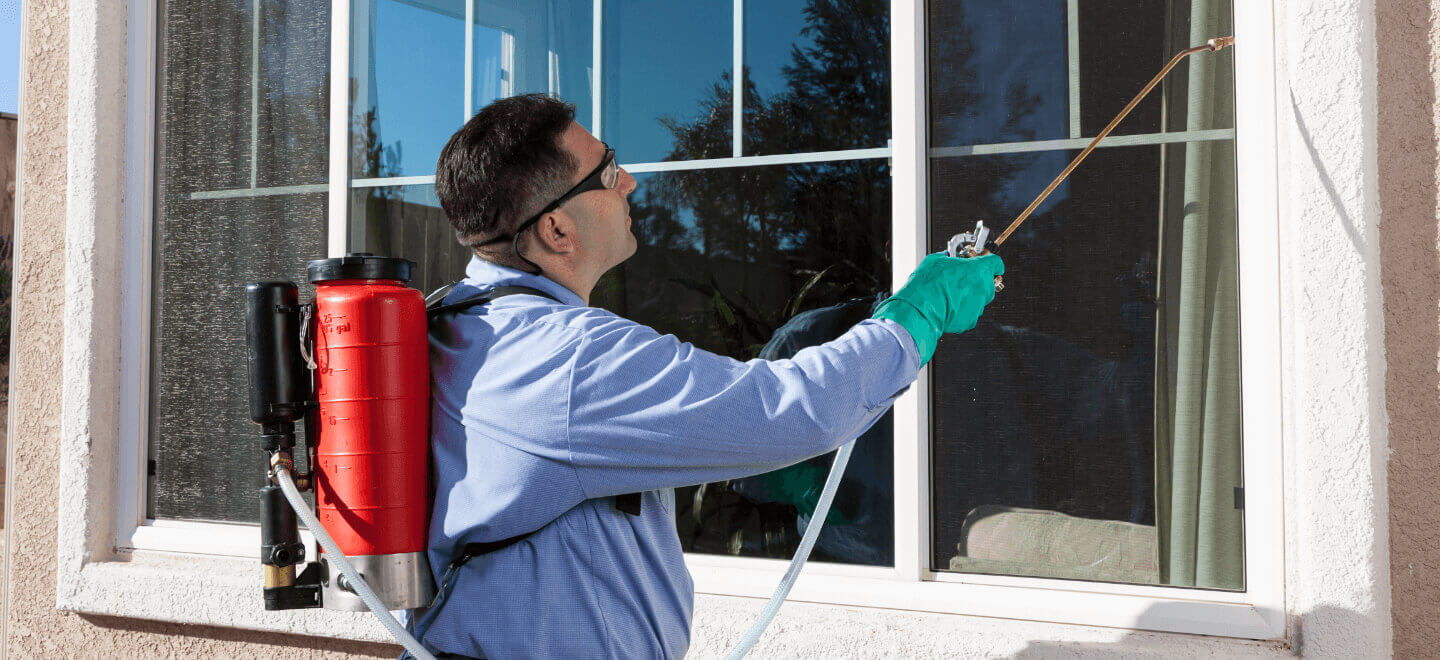A1 Charlotte Pest Control Companies - Your Regional Pest Professionals
A1 Charlotte Pest Control Companies - Your Regional Pest Professionals
Blog Article
Bed Pest Therapy Breakdown: Comparing Chemical Vs. Non-Chemical Solutions
In the realm of parasite control, especially when handling the relentless issue of bed bugs, the option in between chemical and non-chemical treatment options can be a crucial one. Both methods use distinctive benefits and drawbacks, affecting factors such as effectiveness, security factors to consider, and overall cost. By checking out the nuanced information of each technique, a more clear understanding of which course to go after in dealing with a bed insect invasion can be achieved.
Performance of Chemical Treatments
Chemical treatments for bed insect invasions have been commonly recognized for their potent and fast effectiveness in getting rid of these pests. When considering the performance of chemical treatments, it is critical to comprehend that they can supply a quick and detailed service to a bed bug issue.
Furthermore, chemical treatments have the advantage of providing residual impacts, implying that they can remain to remove bed insects also after the preliminary application. This residual action is specifically useful in combating any possible re-infestations. Additionally, the fast action of chemical treatments can bring alleviation to individuals encountering serious bed bug invasions, permitting them to restore control of their home swiftly.
Security Worries With Chemical Solutions
One important facet that needs mindful consideration when utilizing chemical remedies for bed pest therapy is making certain the safety of passengers and the environment. Exposure to particular chemicals utilized in bed pest therapies can lead to respiratory problems, skin irritation, or other negative reactions, especially in individuals with pre-existing conditions or level of sensitivities.
Furthermore, the ecological impact of chemical remedies is an additional considerable factor to consider. Some chemicals utilized in bed bug therapies may be harmful to helpful insects, wild animals, and communities if they seep right into the soil or water supply. It is necessary to use chemical therapies judiciously, adhering to safety and security standards, and considering much less poisonous options to reduce these risks and guarantee the secure and efficient monitoring of bed bug invasions.
Advantages of Non-Chemical Approaches
Taking into consideration the prospective security problems and ecological effect connected with chemical services for bed pest therapy, discovering non-chemical techniques offers a promising choice with a number of unique benefits. Non-chemical treatments are environmentally pleasant, as they do not contribute to air or water pollution, making them a lasting selection for pest control.
In addition, non-chemical solutions can be reliable in targeting bed insects, including hard-to-reach locations where chemical treatments might not permeate. Techniques such as warm therapy, vacuuming, heavy steam cleaning, and bed mattress encasements give thorough obliteration without the usage of hazardous chemicals. Moreover, non-chemical techniques can be less turbulent, needing minimal preparation and permitting for quicker reentry right into treated locations. On the whole, going with non-chemical bed pest treatment techniques not only focuses on safety and ecological defense but likewise ensures effective and thorough pest control.
Limitations of Non-Chemical Treatments

In addition, non-chemical therapies typically require several applications to achieve effective obliteration. This can be taxing and may not constantly guarantee full removal of all bed insects and their eggs, particularly in covert or hard-to-reach areas.
In addition, the success of non-chemical therapies greatly depends on proper application and thoroughness, which can be testing for people without expert knowledge. Inadequate application of non-chemical techniques might lead to insufficient obliteration, resulting in relentless infestations and the requirement for additional treatments.
As a result, while non-chemical therapies have their advantages, it is vital to recognize these limitations and consider them when identifying one of the most effective method for handling bed bug problems.
Cost Contrast: Chemical Vs. Non-Chemical Options
Given the restrictions connected with you could try these out non-chemical treatments, a necessary facet to evaluate in the context of bed pest monitoring is the expense contrast in between chemical and non-chemical alternatives. Chemical therapies usually entail the application of pesticides by experts, which can range from $250 to $900 per space, relying on the extent of the problem and the size of the area to be treated. On the other hand, non-chemical therapies like warm therapy or steam can be more costly, with expenses ranging from $1,000 to $6,000 for an entire home. While the preliminary expense of chemical treatments may seem lower, several treatments may be needed to fully eradicate the invasion, possibly enhancing the general cost. On the other hand, non-chemical options may give a more eco-friendly and lasting remedy, although they can be cost-prohibitive for some people. Eventually, when thinking about the expense of bed bug treatment alternatives, it is necessary to weigh the in advance expenses against the performance and lasting sustainability of the selected method.
Verdict

Considering the possible security concerns and environmental impact linked with chemical options for bed bug therapy, exploring non-chemical approaches presents an encouraging option with several unique benefits.Offered the restrictions associated with non-chemical therapies, a vital element to evaluate in the context of bed pest administration is the price contrast between chemical and non-chemical choices. In contrast, non-chemical treatments like heat therapy or steam can use this link be extra expensive, with prices varying from $1,000 to $6,000 for a whole home. While the preliminary cost of chemical treatments may seem lower, several treatments may be called for to completely get rid of the infestation, possibly increasing the general price.In conclusion, when contrasting chemical and non-chemical bed bug treatment alternatives, it is vital to take into consideration efficiency, security, benefits, restrictions, and price.
Report this page